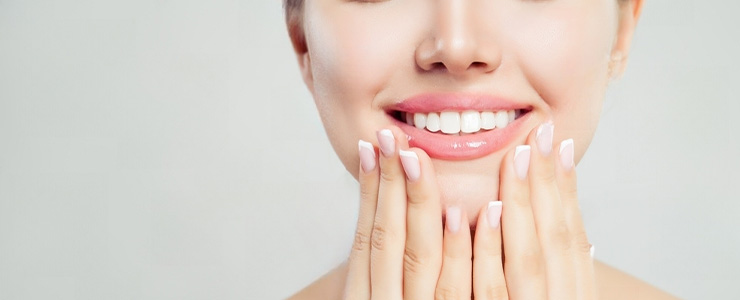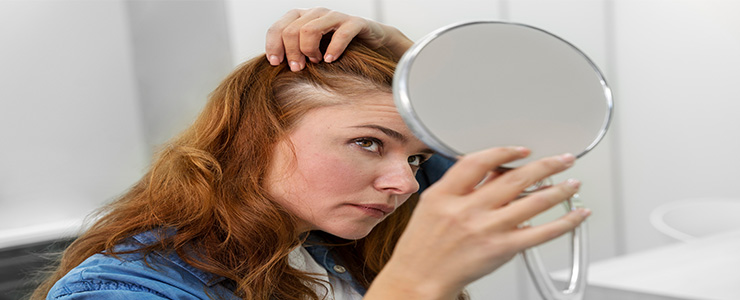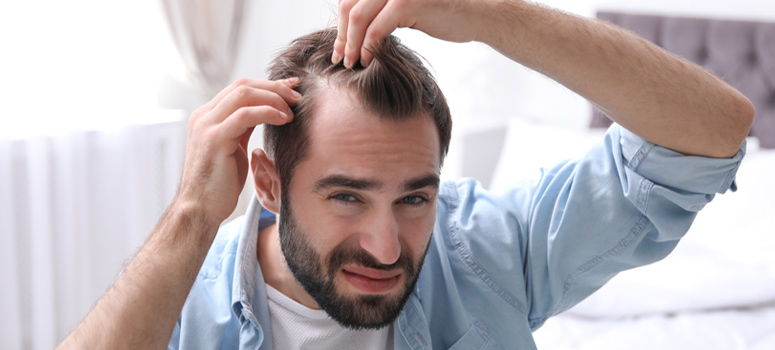When you see patches of hair falling off your scalp, leaving a bald spot and completely altering your physical appearance, it could be a case of a scalp-related fungal infection called Tinea Capitis. The medical condition, on the other hand, is called Alopecia Areata. It causes hair loss, hair thinning, and spot baldness on the scalp and can also affect your eyebrows and eyelashes. It is one of the most common hair care concerns for both men and women. So, if you see experience hair loss of this proportion, you need to get in touch with a dermatologist or a trichologist immediately for a hair loss solution. Today, we will talk about the different types of hair loss, its causes, and the possible precautions you can take to minimise hair loss and increase hair regrowth. You may wonder, ‘How to prevent hair loss?’ however, you can only begin to address the problem when you know there is one. So, understanding the types of hair loss and their differentiating factors will help you figure out the next steps. Similarly, the causes of hair loss will help you distinguish between the things you should do and the things you shouldn’t do to prevent the condition altogether. First, we will take a look at the various types of hair loss or alopecia.
-
Involutional Alopecia:
This is a natural condition that gradually thins the hair with age. This condition occurs due to hair follicles moving to the resting phase and a subsequent slowdown in the growth of new hair.
-
Androgenic Alopecia:
This is a genetic condition that affects both men and women. Androgenic Alopecia or hair loss in men is called male pattern baldness, and it can affect them as early as their teens or early 20s. The condition gets characterized by a receding hairline and the gradual disappearance of hair from the crown and frontal scalp. On the other hand, women do not see any specific signs such as hair thinning over the entire scalp until their 40s or much later. In women, the most extensive hair loss under female pattern baldness is noticeable at the crown.
-
Alopecia Areata:
This condition causes patchy hair loss in young adults as well as children, and it could result in complete baldness (Alopecia Totalis). However, 90% of the people with this condition recover within a few years.
-
Alopecia Universalis:
This type of hair loss causes all of the body hair to fall out, including the eyebrows, eyelashes, and even pubic hair.
-
Trichotillomania:
This condition mostly affects children, and it is a psychological disorder in which they pull out their hair.
-
Telogen Effluvium:
This condition causes temporary hair thinning over the scalp due to changes in the hair growth cycle. A large number of hair follicles enter the resting phase at the same time, causing sudden hair shedding and subsequent hair thinning.
-
Scarring Alopecias:
This condition results in permanent loss of hair. Inflammatory skin conditions like cellulitis, folliculitis, and acne, and other skin disorders result in scars. These scars destroy the ability of your hair to regenerate. Hot combs and tightly woven and pulled hair can also result in permanent hair loss.
While the different types of hair loss can cause a change in your appearance, you should know several factors that influence hair loss, and this knowledge can help with their prevention or treatment. The causes of hair loss include:
Hormonal imbalances such as abnormal levels of androgens (male hormones produced by both men and women), can lead to hair loss.
Genetics plays a vital role in hair loss or spot baldness. If you have spot baldness, you have likely inherited it from one of your parents, and may influence your predisposition to male or female pattern baldness.
Factors such as stress, illness, or childbirth can also cause temporary hair loss. Fungal infections on the scalp, such as ringworm or folliculitis, can also cause hair loss. Alopecia areata is when your body’s immune system itself attacks the healthy cells and hair follicles, which disrupts the hair growth cycle altogether.
Drugs, drugs used in chemotherapy, blood thinners, beta-adrenergic blockers used to control blood pressure, and birth control pills can all result in temporary hair loss.
Autoimmune diseases could result in alopecia areata. In alopecia areata, the immune system speeds up for reasons unknown and affects the hair follicles. Most people affected with alopecia areata have their hair grow back within a short time. Although it may appear thin and possibly a lighter color before the thickness and natural colour returns.
Cosmetic or chemical procedures on your hair, such as perming, bleaching, and dyeing, make the hair weak and brittle, thus, contributing to overall hair thinning. However, these procedures will not cause spot baldness.
Underlying medical conditions such as thyroid disease, lupus, and diabetes, or iron deficiency anaemia, eating disorders can cause hair loss. When the underlying condition gets treated, your hair will return unless it is a case of scarring alopecia, in which case permanent hair loss is a possibility.
An unhealthy diet or a low-protein diet or severely calorie-restricted diet can also cause temporary hair loss.
If you notice any unusual signs such as thinning hair, receding hairline, or sudden loss of patches of hair, consult a qualified trichologist or dermatologist right away. You can, however, prevent these unwanted changes by adopting healthy habits and practices and hair care tips, and keep your locks lustrous and shiny always. Remember not to self-diagnosis and self-medicate. If you have any skin or hair-related issues, visit a dermatologist immediately for a proper diagnosis and treatment. For more on skincare and haircare, visit the Skin & Hair Academy.

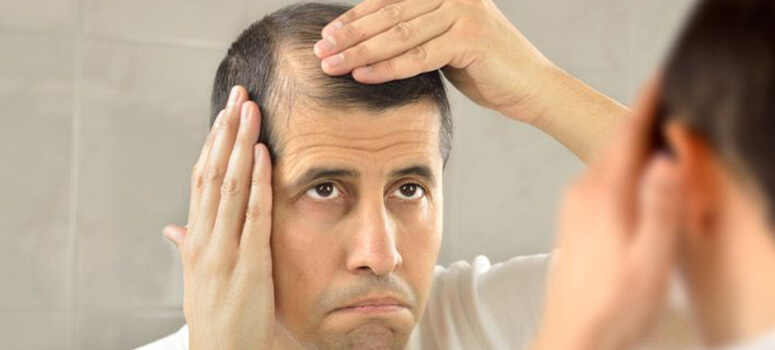
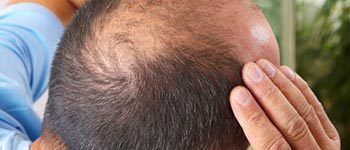 This is a natural condition that gradually thins the hair with age. This condition occurs due to
This is a natural condition that gradually thins the hair with age. This condition occurs due to  This is a genetic condition that affects both men and women. Androgenic Alopecia or hair loss in men is called
This is a genetic condition that affects both men and women. Androgenic Alopecia or hair loss in men is called 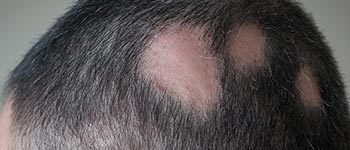 This condition causes patchy hair loss in young adults as well as children, and it could result in complete baldness (Alopecia Totalis). However, 90% of the people with this condition recover within a few years.
This condition causes patchy hair loss in young adults as well as children, and it could result in complete baldness (Alopecia Totalis). However, 90% of the people with this condition recover within a few years. This type of hair loss causes all of the body hair to fall out, including the eyebrows, eyelashes, and even pubic hair.
This type of hair loss causes all of the body hair to fall out, including the eyebrows, eyelashes, and even pubic hair.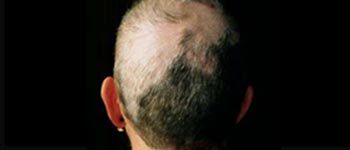 This condition mostly affects children, and it is a psychological disorder in which they pull out their hair.
This condition mostly affects children, and it is a psychological disorder in which they pull out their hair.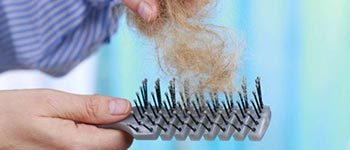 This condition causes temporary hair thinning over the scalp due to changes in the hair growth cycle. A large number of hair follicles enter the resting phase at the same time, causing sudden hair shedding and subsequent hair thinning.
This condition causes temporary hair thinning over the scalp due to changes in the hair growth cycle. A large number of hair follicles enter the resting phase at the same time, causing sudden hair shedding and subsequent hair thinning.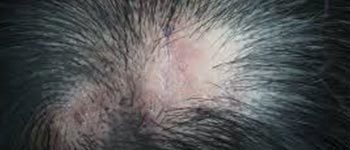 This condition results in permanent loss of hair. Inflammatory skin conditions like
This condition results in permanent loss of hair. Inflammatory skin conditions like  Hormonal imbalances such as abnormal levels of androgens (male hormones produced by both men and women), can lead to hair loss.
Hormonal imbalances such as abnormal levels of androgens (male hormones produced by both men and women), can lead to hair loss.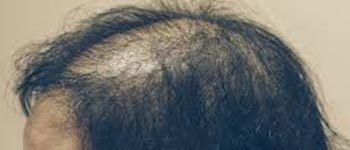 Genetics plays a vital role in hair loss or spot baldness. If you have spot baldness, you have likely inherited it from one of your parents, and may influence your predisposition to male or
Genetics plays a vital role in hair loss or spot baldness. If you have spot baldness, you have likely inherited it from one of your parents, and may influence your predisposition to male or  Factors such as stress, illness, or childbirth can also cause temporary hair loss. Fungal infections on the scalp, such as
Factors such as stress, illness, or childbirth can also cause temporary hair loss. Fungal infections on the scalp, such as  Drugs, drugs used in chemotherapy, blood thinners, beta-adrenergic blockers used to control blood pressure, and birth control pills can all result in temporary hair loss.
Drugs, drugs used in chemotherapy, blood thinners, beta-adrenergic blockers used to control blood pressure, and birth control pills can all result in temporary hair loss.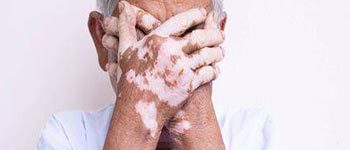 Autoimmune diseases could result in alopecia areata. In alopecia areata, the immune system speeds up for reasons unknown and affects the hair follicles. Most people affected with alopecia areata have their hair grow back within a short time. Although it may appear thin and possibly a lighter color before the thickness and natural colour returns.
Autoimmune diseases could result in alopecia areata. In alopecia areata, the immune system speeds up for reasons unknown and affects the hair follicles. Most people affected with alopecia areata have their hair grow back within a short time. Although it may appear thin and possibly a lighter color before the thickness and natural colour returns.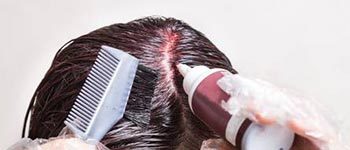 Cosmetic or chemical procedures on your hair, such as perming, bleaching, and dyeing, make the hair weak and brittle, thus, contributing to overall hair thinning. However, these procedures will not cause spot baldness.
Cosmetic or chemical procedures on your hair, such as perming, bleaching, and dyeing, make the hair weak and brittle, thus, contributing to overall hair thinning. However, these procedures will not cause spot baldness. Underlying medical conditions such as thyroid disease, lupus, and diabetes, or iron deficiency anaemia, eating disorders can cause hair loss. When the underlying condition gets treated, your hair will return unless it is a case of scarring alopecia, in which case permanent hair loss is a possibility.
Underlying medical conditions such as thyroid disease, lupus, and diabetes, or iron deficiency anaemia, eating disorders can cause hair loss. When the underlying condition gets treated, your hair will return unless it is a case of scarring alopecia, in which case permanent hair loss is a possibility. An unhealthy diet or a low-protein diet or severely calorie-restricted diet can also cause temporary hair loss.
An unhealthy diet or a low-protein diet or severely calorie-restricted diet can also cause temporary hair loss.


